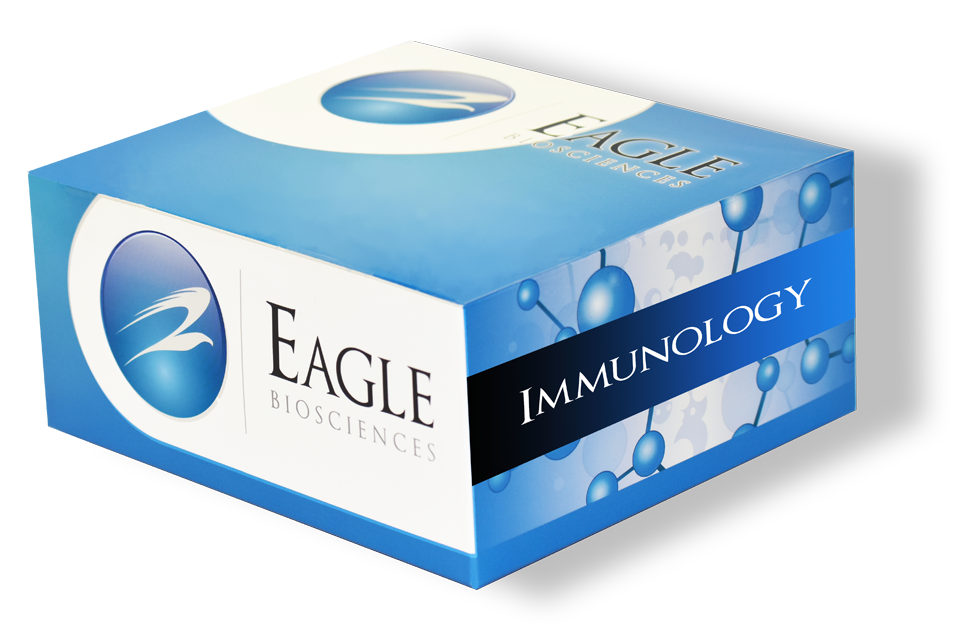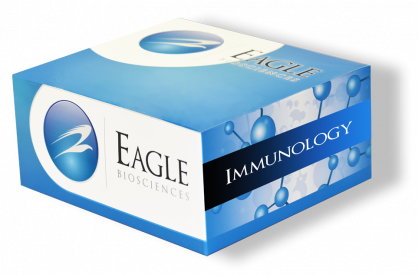Derivatized Histamine ELISA Assay
The Derivatized Histamine ELISA Assay is For Research Use Only
Size: 1×96 wells
Sensitivity: 0.15 ug/mL
Dynamic Range: 0.5-50 ng/mL
Incubation Time: 1 hour
Sample Type: Fresh fish, Sausage, Milk, Wine, Fish Meal, Champagne
Sample Size: 25 µL
Assay Background
Fish meal that has been produced from materials which has been allowed to degrade prior to being processed can contain high levels of histamine and can be toxic. Elevated histamine levels (1,000 ppm) can cause gizzard erosion and black vomit in poultry. Histamine testing in fresh fish is a possible control strategy that can be used by seafood processors in their HACCP program to address the hazard of scombrotoxin formation. Histamine is a product of decomposition of histidine caused by the growth of certain bacteria in seafood. The amount of the amine that forms is a function of bacterial species, the temperature and time of exposure, and may exceed 1,000 ppm (mg/kg). Fish containing high levels of histamine has been associated with many examples of poisoning commonly referred to as “scombroid poisoning,” a major health problem for consumers. Scombrotoxic fish usually contains levels of histamine in excess of 200 ppm but such fish may be randomly dispersed within a lot. For large fish, histamine is found at variable levels even within individual fish. Quality control measures designed to minimize the occurrence of scombrotoxic fish require the determination of histamine levels in the range of approximately 10 to 200 ppm. Good quality fish contain less than 10 ppm histamine, a level of 30 ppm indicates significant deterioration, and 50 ppm is considered to be evidence of definite decomposition. The defect action level (DAL), the level at which regulatory actions are taken for histamine is 50 ppm.
Related Products
High Sensitive Histamine ELISA Assay Kit
Histamine ELISA Assay Kit
HistaSure AOAC food ELISA Assay Kit
Assay Principle
This assay employs the competitive enzyme immunoassay technique. Histamine is bound to the solid phase of the microtiter plate. Acylated histamine and solid phase bound histamine compete for a fixed number of antiserum binding sites. When the system is in equilibrium, free antigen and free antigen-antiserum complexes are removed by washing. The antibody bound to the solid phase histamine is detected by anti-goat/peroxidase. The substrate TMB/peroxidase reaction is monitored at 450 nm. The amount of antibody bound to the solid phase histamine is inversely proportional to the histamine concentration of the sample.
Assay Procedure
Acylation
1. Pipette 100 µL of standards, controls and extracts into the respective wells of the Reaction Plate.
2. Add 25 µL of Acylation Reagent to all wells.
3. Pipette 200 µL of Acylation Buffer into all wells.
4. Incubate 15 minutes at RT (20-25°C) on a shaker (approx. 600 rpm) Alternative protocol without shaker: shake the plate shortly by hand and incubate for 15 min at RT.
Histamine ELISA
1. Pipette 25 µL of the acylated standards, controls and samples into the wells of the Histamine Microtiter Strips.
2. Pipette 100 µL of the Histamine Antiserum into all wells.
3. Incubate 30 min at RT (20-25°C) on a shaker (approx. 600 rpm). Alternatively without shaker: shake the Histamine Microtiter Strips shortly by hand and incubate for 40 min at RT (20-25°C).
4. Aspirate each well and wash, repeating the process 3 times for a total 4 washes. Wash by filling each well with 1× Wash Buffer (350 mL) using a squirt bottle, manifold dispenser, or autowasher. Complete removal of liquid at each is essential to good performance. After the last wash, remove any remaining Wash Buffer by aspirating, decanting or blotting against clean paper towels.
5. Pipette 100 µL of the Enzyme Conjugate into all wells.
6. Incubate for 10 min at RT (20-25°C) on a shaker (approx. 600 rpm). Alternatively without shaker: incubate for 20 min at RT (20-25°C).
7. Wash as according to step 4.
8. Add 100 μl of TMB Reagent to each well. Incubate for 15 minutes at room temperature in dark.
9. Add 100 μl of Stop Solution to each well. 10. Read the OD with a microplate reader at 450 nm immediately.
Package Inserts
Please note: All documents above are for reference use only and should not be used in place of the documents included with this physical product. If digital copies are needed, please contact us.


